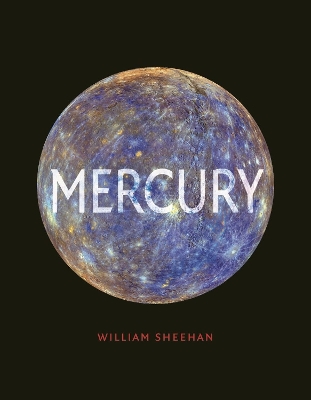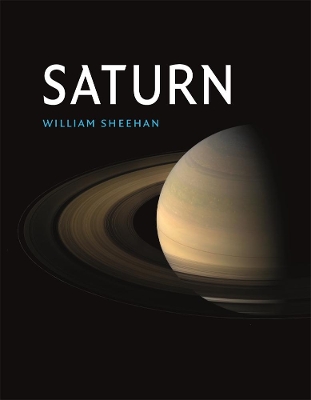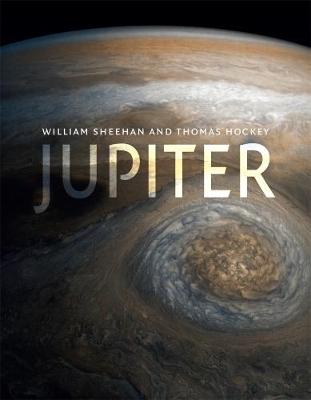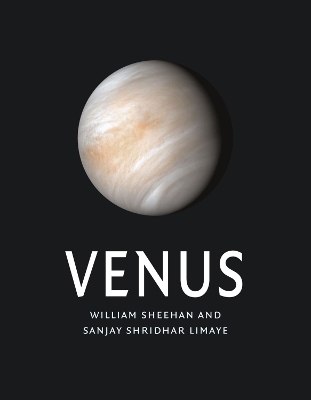Kosmos
4 total works
The last of the five naked-eye planets discovered in ancient times, Mercury has long been an elusive, enigmatic world. As seen from the Earth, it never emerges far from the Sun, and astronomers in the telescopic era found it challenging to work out such basic data as its rotation period, the inclination of its axis, and whether or not it possessed an atmosphere.
In this up-to-date and beautifully illustrated volume, William Sheehan brings our understanding of the planet into clear focus. He deftly traces the history from the earliest observations right up to the most recent explorations using radar and spacecraft. The planet has been surveyed in great detail, revealing vast volcanic plains, water-ice deposits in craters near the poles, and a remarkable core having the highest iron content of any body of the Solar System. A fascinating world in its own right, Mercury also holds important clues for scientists attempting to better understand the origin and evolution of the Earth.
In this up-to-date and beautifully illustrated volume, William Sheehan brings our understanding of the planet into clear focus. He deftly traces the history from the earliest observations right up to the most recent explorations using radar and spacecraft. The planet has been surveyed in great detail, revealing vast volcanic plains, water-ice deposits in craters near the poles, and a remarkable core having the highest iron content of any body of the Solar System. A fascinating world in its own right, Mercury also holds important clues for scientists attempting to better understand the origin and evolution of the Earth.
Saturn is the showcase of the Solar System. It may not be the largest of the planets, nor the smallest, nor even the only planet with rings. But it is among the most stunningly beautiful objects in the sky, and is always breathtaking when seen in a telescope.
This is a beautifully illustrated, authoritative overview of the entire history of humankind’s fascination with the ringed planet, from the first low-resolution views of Galileo, Huygens and other early observers with telescopes to the most recent discoveries by the spacecraft Cassini, which studied the planet at close range between 2004 and 2017. The book describes the planet from inside out, details the complicated system of rings and their interaction with Saturn’s bevy of satellites, and considers how Saturn formed and the role it played in the early history of the Solar System. Featuring the latest research and a spectacular array of images, it will appeal to the wide audience for astronomy and popular science.
This is a beautifully illustrated, authoritative overview of the entire history of humankind’s fascination with the ringed planet, from the first low-resolution views of Galileo, Huygens and other early observers with telescopes to the most recent discoveries by the spacecraft Cassini, which studied the planet at close range between 2004 and 2017. The book describes the planet from inside out, details the complicated system of rings and their interaction with Saturn’s bevy of satellites, and considers how Saturn formed and the role it played in the early history of the Solar System. Featuring the latest research and a spectacular array of images, it will appeal to the wide audience for astronomy and popular science.
Jupiter is the grandest of all planets. It is by far the largest planet in the solar system and among the brightest objects in the night sky, and its calming presence has inspired humans for centuries. Jupiter was the `beloved star' of the ancient Sumerians and Babylonians, the first serious observers of the planets, and the Pioneer and Voyager spacecraft visited it in the 1970s. Now it is being scrutinized as never before by NASA's Juno spacecraft, as experts begin to have a comprehensive view of the origin, composition and structure of this gas giant world.
This beautifully illustrated volume ranges across the entire history of Jupiter studies, from the naked-eye observations of the Babylonians and the Greeks, through the telescopic discoveries of Galileo and T.E.R. Phillips, to the explosion of information received from space probes. It brings our understanding of Jupiter right up to date and includes preliminary findings from the Juno space probe, while also providing valuable practical information for those who wish to make their own observations of the planet. Introducing planetary science in an accessible and engaging way, Jupiter will appeal to those who wish to have a better understanding of this magnificent planet and its unique place in the solar system.
This beautifully illustrated volume ranges across the entire history of Jupiter studies, from the naked-eye observations of the Babylonians and the Greeks, through the telescopic discoveries of Galileo and T.E.R. Phillips, to the explosion of information received from space probes. It brings our understanding of Jupiter right up to date and includes preliminary findings from the Juno space probe, while also providing valuable practical information for those who wish to make their own observations of the planet. Introducing planetary science in an accessible and engaging way, Jupiter will appeal to those who wish to have a better understanding of this magnificent planet and its unique place in the solar system.
This new and beautifully illustrated account of Venus takes in the most recent research into this mysterious, inhospitable world. Looking at the history of our observations of the planet, from early astronomy to future space missions, it seeks to answer many of the questions that remain unanswered, such as why Venus and Earth, so similar in size and mass, evolved in such different directions, and how Venus acquired its dense carbon-dioxide atmosphere. Above all, it assesses whether life might have escaped from the oven-like temperatures at the surface and evolved to become perpetually airborne – in which case Venus may not be lifeless after all.



